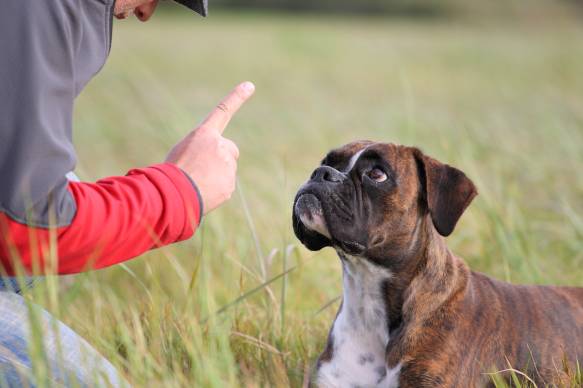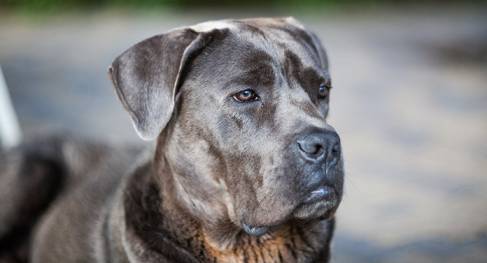A common condition in older dogs is old dog vestibular disease. It can look very scary and appear as if the dog is having a stroke or seizure. Some dogs may even walk as if they’re drunk, with a tilted head. This can be really scary; however, the cause is not all that serious.
Connect with a verified veterinarian in minutes. Licensed vets are available 24/7 to answer your questions. No need to worry about your furry family member.
In this article, we’ll take a look at idiopathic vestibular disease in older dogs.
What is the Vestibular System?
The first thing you need to know about is the vestibular system. This is a system that’s located in the brain, with the outer components found in the inner and middle ear. This is the system that’s responsible for controlling balance.
The vestibular system is made up of sensors that are located deep inside the inner ear, with the control center in the brain. The brain sends out messages that create small changes in position and movement to help the eyes and body change position, as well as the head.
The information from the head and body movements is sent back to the brain as electrical signals. The brain then processes the information and sends messages to other parts of the body on how to keep the dog standing up. Messages are sent to the muscles, too.
What Is Vestibular Disease?
Vestibular disease starts off with sudden symptoms, which cause a non-progressive disturbance in the dog’s balance. This condition may be called idiopathic vestibular disease or old dog vestibular syndrome. The word “idiopathic” means the cause is not clear.
There are some conditions that can affect vestibular disease, including nerve tumors, nerve inflammation, hypothyroidism, inflammation/infection of the brain, stroke, head trauma, vitamin deficiencies, or even the cyst in the brain.
When the vestibular system experiences a problem, it can cause a dog to walk as if he’s drunk. It may also look as if he’s having a stroke or a seizure. The dog simply loses his sense of balance. That’s why it’s so scary for the pet parents.
You’ll be happy to know that vestibular disease is not painful for your dog.

Review symptoms, medications & behavior to keep your pets healthy with a Vet Online in just minutes.
Ask a Vet Live NowVestibular Disease Symptoms
You may notice these symptoms if your dog develops old dog vestibular syndrome:
- Head tilted
- Unsteady walking
- Loss of balance
- Falling over
- Circling in one direction
- Eyes rapidly moving from side to side
- Sudden vomiting
- Loss of hearing
- Drooping muscles in the face (facial paralysis)
The main thing to understand is that these symptoms are not only caused by old dog vestibular syndrome. They can also be caused by brain tumors, an inner ear infection, inflammatory disease, sudden brain bleeds, and more.
What’s more, the symptoms may appear suddenly, with no warning or previous appearance. It may truly look as if the dog is having a seizure or a stroke. The vet would be able to tell. So, if possible, it can be helpful to record your dog as he experiences this condition.
If your dog is experiencing any of these symptoms, then call the vet right away.
Diagnosis of Vestibular Disease in Older Dogs
The diagnosis is usually based on the dog’s medical history and symptoms. At the vet’s, they will perform a complete physical exam of your dog. This may also include lab work, blood pressure measurement, x-rays of your dog’s head, and more. In some cases, the x-ray images may not be good enough, so the vet may order an MRI or CT scan. These imaging techniques can help find tumors and other issues.
The vet will base their findings on the following:
- Your dog’s age
- Sudden onset of symptoms
- No cause has been found (idiopathic)
- Symptoms resolve on their own over time (may take several weeks)
Treatment of Vestibular Disease in Older Dogs
Treatment will be based on the vet’s diagnosis if they can find a health issue that seems to be the cause. In some cases where the condition is severe, the dog may need to be hospitalized for a time. He may also require an IV for fluids and the administration of medications needed to treat symptoms. In some cases, a hospitalized dog may also require a urinary catheter to treat incontinence caused by the vestibular disease symptoms.
For dogs who are having severe balance issues, it may be necessary to sedate the dog to help him relax. The vet may also prescribe motion sickness or anti-nausea medication to help manage the dizziness and balance issues.
If your dog has a middle or inner ear infection, the vet will prescribe antibiotics to treat the infection. Some vets use corticosteroids to treat vestibular disease; however, studies have not shown that these medications are much help for this condition.
In most cases, if the dog recovers within three days, then the cause is idiopathic vestibular disease. In that case, the dog won’t need further treatment or tests.
However, if the dog does not recover within three days and/or if his symptoms worsen, then the vet may suspect a more serious cause. This could include a tumor. In that case, the dog will need more tests, such as MRIs, to determine the cause of his symptoms.
Some Pet Parents Opt for Euthanasia
There are some cases where pet parents believe their dogs need to be euthanized due to idiopathic vestibular disease in older dogs. However, this isn’t always the best solution.
Most vets advise that it’s best to wait and see if the dog will improve or not. The reason is that this condition has a very high likelihood of improving. They believe it’s best to give the dog a chance rather than cut the dog’s life short without giving him a chance to recover.
Vets urge that euthanasia is a permanent decision. Once it’s made, you can’t go back. If a dog fails to recover, then it may be time to discuss having the dog put to sleep. But not before giving him a chance at recovery from vestibular disease.
So, if your dog starts showing signs of old dog vestibular disease, it’s important to get an appointment with the vet as soon as possible. The sooner your dog receives a diagnosis and treatment, the sooner he may begin feeling better.
Connect with a verified veterinarian in minutes. Licensed vets are available 24/7 to answer your questions. No need to worry about your furry family member.

Julie
Julie is a graduate of the University of North Carolina, Wilmington, where she studied Animal science. Though contrary to the opinion of her parents she was meant to study pharmacy, but she was in love with animals especially cats. Julie currently works in an animal research institute (NGO) in California and loves spending quality time with her little cat. She has the passion for making research about animals, how they survive, their way of life among others and publishes it. Julie is also happily married with two kids.
Review symptoms, medications & behavior to keep your pets healthy with a Vet Online in just minutes.
Ask a Vet Live Now



